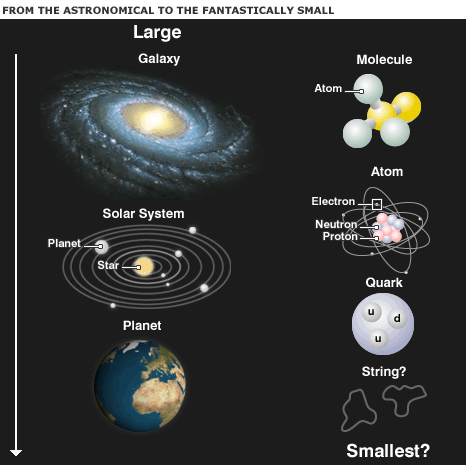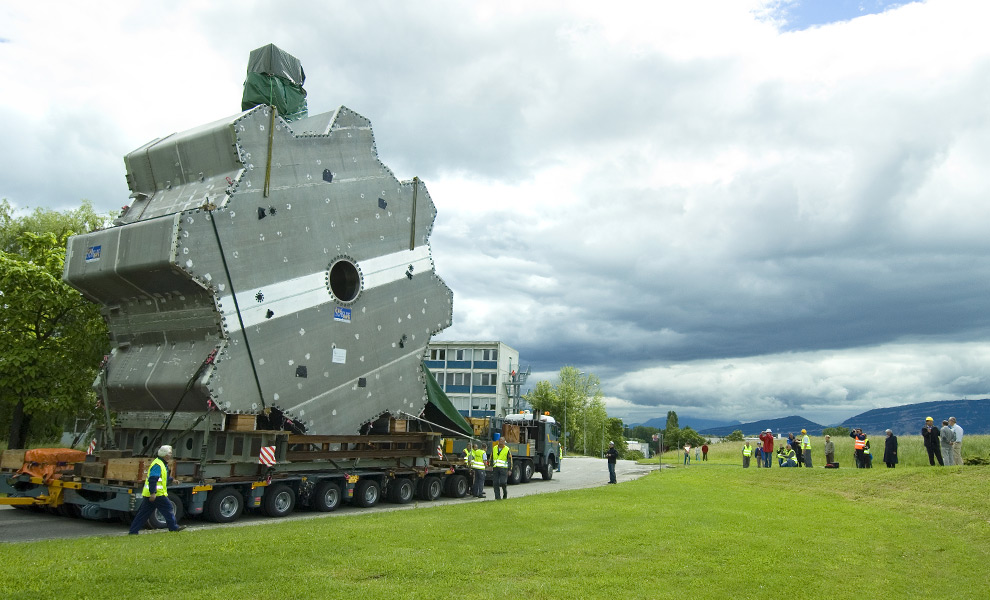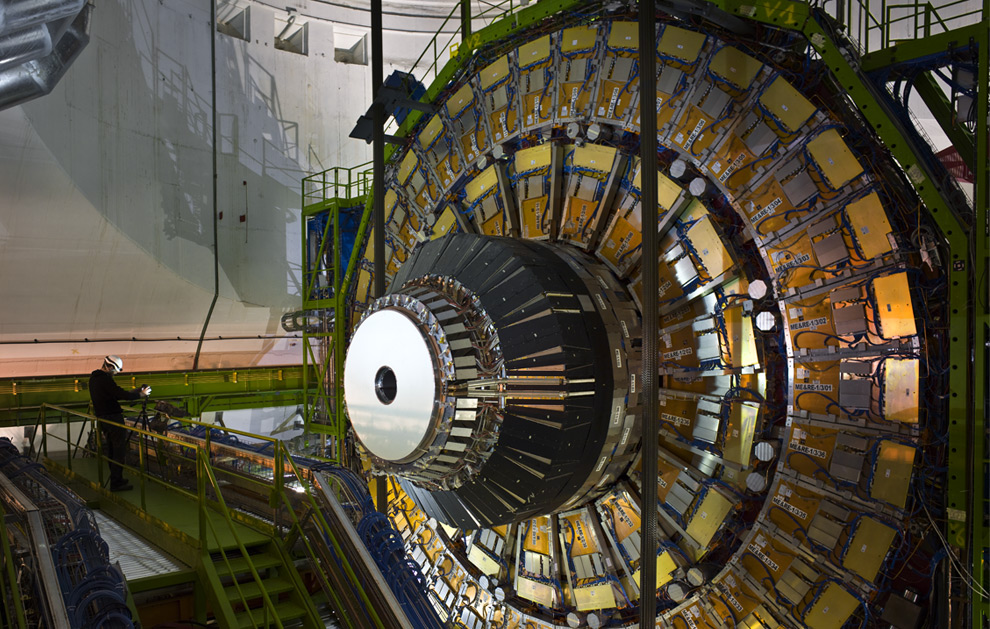
The Large Hadron Collider (LHC) - will smash two beams of proton particles head-on, close to the speed of light, recreating the conditions in the Universe moments (fraction of a second) after the Big Bang
What is a Hadron?
How do you build a "Big Bang Machine"? That was the challenge which scientists at Cern began to ponder in the early 1980s, when the idea for the Large Hadron Collider was born.
Cern's governing council wanted to build a kind of time machine that could open a window to how the Universe appeared in the first microseconds of its existence. If it could recreate the fleeting moments 13.73 billion years ago, when the fundamental building blocks of the cosmos took shape, then the world we live in today would be brought into much sharper focus.
To generate the necessary high energies, the designers required a particle accelerator more magnificently complex than any machine ever built. Beams of protons would be hurled together at 99.9999999% of the speed of light, in conditions colder than the space between the stars and each travelling with as much energy as a car at the speed of 1,600km/h. And yet the fruits of these explosions - high-energy particles - would decay and disappear from view in less than a trillionth of a second.
To "photograph" these valuable prizes would require a detector as large as a five storey building, yet so precise, it could pinpoint a particle with an accuracy of 15 microns - 20 times thinner than a human hair. How on earth do you build a machine like that? The journey took 14 years, more than 10,000 scientists, from 40 countries, and a financial injection anticipated at up to $5.8 Billion- four times the original budget.
The accelerator would be housed in a near-circular 27km/17miles - long tunnel, buried 50m-175m underneath the Jura mountains, criss-crossing the Swiss-French border
+


